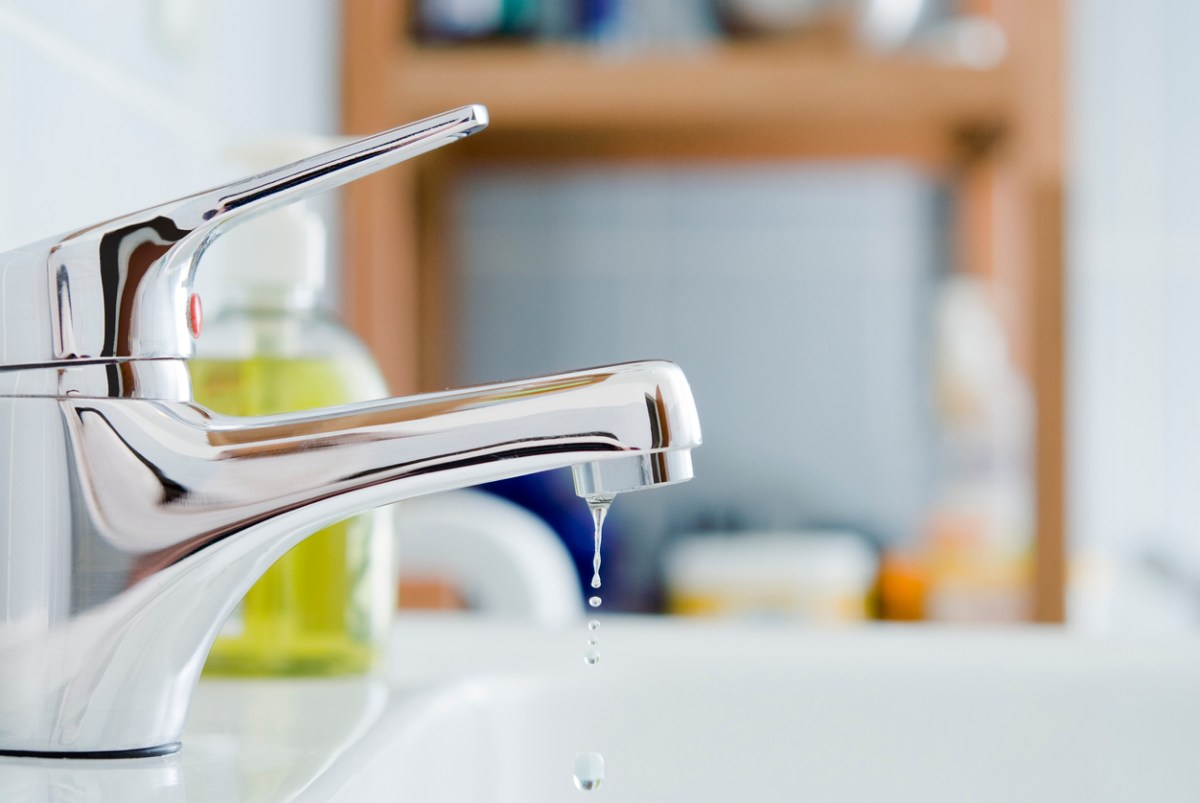Which It's Essential to Resolve a Broken Faucet
Which It's Essential to Resolve a Broken Faucet
Blog Article
This great article directly below in relation to Why Is It Important To Fix Your Leaking Tap/Faucet? is absolutely remarkable. Check it out for your own benefit and see what you think of it.

Trickling taps might look like a minor hassle, but their impact exceeds just the inconvenience of the sound. From drainage to sustaining unnecessary financial prices and health and wellness risks, overlooking a trickling tap can result in various repercussions. In this article, we'll delve into why it's critical to resolve this typical home concern immediately and effectively.
Waste of Water
Ecological Effect
Dripping taps contribute considerably to water wastage. According to the Epa (EPA), a solitary faucet leaking at one drip per second can waste more than 3,000 gallons of water annually. This not just strains water sources but additionally impacts environments and wildlife depending on them.
Financial Expenses
Increased Water Expenses
Beyond the environmental influence, leaking faucets can blow up water expenses substantially. The built up waste gradually translates right into higher utility expenditures, which might have been stayed clear of with timely repair services.
Prospective Property Damages
Moreover, extended leaking can lead to harm to components and surface areas surrounding the tap. Water buildup can trigger staining, deterioration, and even structural issues if left ignored, leading to additional fixing prices.
Health Worries
Mold And Mildew and Mildew Development
The consistent presence of moisture from a leaking tap creates a suitable environment for mold and mildew development. These fungi not only jeopardize interior air top quality but also pose health threats, specifically for people with respiratory problems or allergies.
Waterborne Conditions
Stationary water in trickling taps can come to be a breeding place for germs and other microorganisms, enhancing the threat of waterborne illness. Impurities such as Legionella bacteria prosper in stagnant water, possibly bring about severe illnesses when consumed or breathed in.
Do it yourself vs. Specialist Repair service
Pros and Cons of DIY Repair Work
While some might attempt to repair a trickling tap themselves, DIY fixings include their own set of obstacles. Without proper understanding and devices, do it yourself attempts can intensify the issue or lead to incomplete repair work, prolonging the trouble.
Benefits of Hiring a Specialist Plumber
Hiring a specialist plumber makes sure that the underlying source of the dripping tap is addressed successfully. Plumbing technicians possess the proficiency and devices to identify and repair faucet problems effectively, saving time and reducing the risk of further damage.
Step-by-Step Overview to Dealing With a Dripping Tap
Tools Required
Before trying to take care of a leaking tap, gather the required devices, consisting of a flexible wrench, screwdrivers, replacement components (such as washers or cartridges), and plumber's tape.
Common Tap Issues and Their Solutions
Determine the type of tap and the particular concern triggering the drip. Common issues consist of worn-out washing machines, corroded shutoff seats, or faulty O-rings. Describe maker instructions or on the internet tutorials for step-by-step support on repair work.
Safety nets
Routine Upkeep Tips
To prevent trickling faucets, perform regular maintenance such as cleansing aerators, examining for leaks, and changing worn-out parts quickly. Furthermore, consider setting up water-saving devices or updating to extra efficient components.
Importance of Prompt Repairs
Dealing with dripping taps as quickly as they're seen protects against additional water waste and potential damages, inevitably saving both water and money in the future.
Effect On Building Worth
Perception of Well-Maintained Property
Maintaining a home in good condition, consisting of dealing with upkeep issues like leaking taps, enhances its viewed worth and desirability among possible customers or tenants.
Influence on Resale Worth
Properties with well-kept plumbing components, consisting of taps, command greater resale worths in the realty market. Dealing with trickling faucets can add to a favorable impression during property evaluations and negotiations.
Environmental Obligation
Specific Contribution to Conservation
Taking duty for fixing leaking taps straightens with wider efforts toward water preservation and environmental sustainability. Every individual's activities collectively make a significant influence on protecting precious sources.
Sustainable Living Practices
By prioritizing punctual repair services and adopting water-saving routines, individuals add to sustainable living techniques that benefit both present and future generations.
Verdict
Dealing with a trickling tap goes beyond simple ease; it's a crucial step toward preserving water, reducing financial expenses, and securing health and building. Whether through DIY repairs or professional assistance, taking action to fix trickling taps is a little yet impactful way to promote liable stewardship of sources and contribute to a healthier, extra lasting future.
How to Fix a Leaky Faucet: Step-by-Step Repair Guide
A leaky faucet may seem like a simple annoyance, but if it's not fixed promptly, that leak could cost hundreds to potentially thousands. From water damage to mold, mildew, and high water bills, even a tiny leak can be catastrophic if left unattended. Damage like this can even affect the overall value of your home, so it's important to take the right approach for leaky faucet repair. You may need the help of a plumber in some cases, but we've got a few tips you can try on how to fix a leaky faucet before calling the pros.
Four Faucet Types
When you're learning how to fix a leaky faucet, the first step is knowing what kind of faucet you're working with! There are four common types.
Cartridge Faucets
Cartridge faucets come in one- or two-handled varieties. In one-handled cartridge faucets, hot and cold water combines in a single cartridge. In the two-handled versions, hot and cold water are controlled separately and mixed in the faucet.
Ball Faucets
Ball faucets have a single lever you push up and down to adjust the pressure and rotate to change the temperature. A slotted metal ball controls the amount of water allowed into the spout.
Compression Washer Faucets
They're the oldest type of faucet, but they're still used in many homes — especially older ones. Compression faucets have two separate handles that, when turned, raise or lower the washer that seals a water valve. This valve stops water from flowing through the faucet when it is turned off.
Disc Faucets
Disc faucets rarely need to be repaired due to their maintenance-free design. The water flow is controlled by two discs — the upper one raises and lowers against a fixed lower disc, creating a watertight seal. If your disc faucet starts leaking, you may need to replace the seals or clean residue buildup from the inlets.
Fixing a Leaky Faucet
Step 1: Turn Off the Water
Whether you're learning how to fix a leaky bathtub faucet or how to fix a leaky kitchen faucet, always turn off the water supply to your working area when you're fixing a leak. The last thing you want is a flood added to your list of things to fix.
Look for the shutoff valves below your sink or around the tub and turn them clockwise to stop the water flow. If your faucet doesn't have shutoff valves, you may need to turn off the water for the whole house. Check to make sure it's off by turning the faucet on. If nothing comes out, you're ready to start the repair.
Step 2: Take Apart the Faucet
How you disassemble your faucet depends on the type of fixture you have. You can use a flathead screwdriver to remove the caps on top of the handle or handles for cartridge and compression faucets. Inside, you should see handle screws. Unscrew these with a screwdriver to remove the handle.
Disc- and ball-style faucets will typically have an inlet screw near the handle, and removing that will reveal the interior of the faucet.
Detach the Valve Stem
For cartridge- and compression-style faucets, you'll see the inner valve stem or cartridge once you remove the faucet handles. If you have a compression faucet, unscrew the brass valve stem. If you have a cartridge faucet, pull out the cartridge. If your cartridge has been in place for a while, it may require some tools or extra force to remove it due to mineral deposits.
Examine and Replace Parts
Once you've removed the parts, check them out to confirm what needs to be replaced. You may see corroded rubber washers, O-rings, stems, or cartridges. On a ball-style faucet, check the seats and springs for damage.
If you need to repair a leaky disc faucet, check the inlet and seals on the lower disc.
Once you determine what parts must be replaced, visit your local hardware store. Bring the damaged parts with you to ensure you can purchase the correct components to replace them.
Clean Valves and Faucet Cavity
If you've removed a stem or cartridge, you may notice mineral buildup in the faucet's threads. Use white vinegar to clean the valve seat by soaking it for a few minutes, then scrub it away with a soft toothbrush and rinse with warm water. You can also clean the interior of the faucet in the same way.
Reassemble the Faucet
Once your faucet is cleaned and the required parts have been replaced, it's time to reassemble it. Put the pieces back together and slowly turn the water supply back on. Doing this slowly is crucial because too much initial water pressure can damage the new hardware you've just installed.
https://homewarranty.firstam.com/blog/how-to-fix-leaky-faucet

As a passionate reader about Water Dripping from Faucet: Why and How to Fix, I figured sharing that article was a smart idea. Liked our entry? Please share it. Help others find it. Many thanks for taking the time to read it.
Report this page